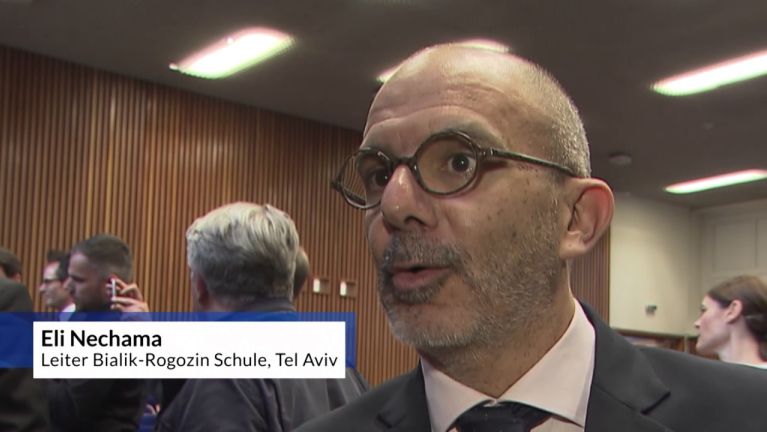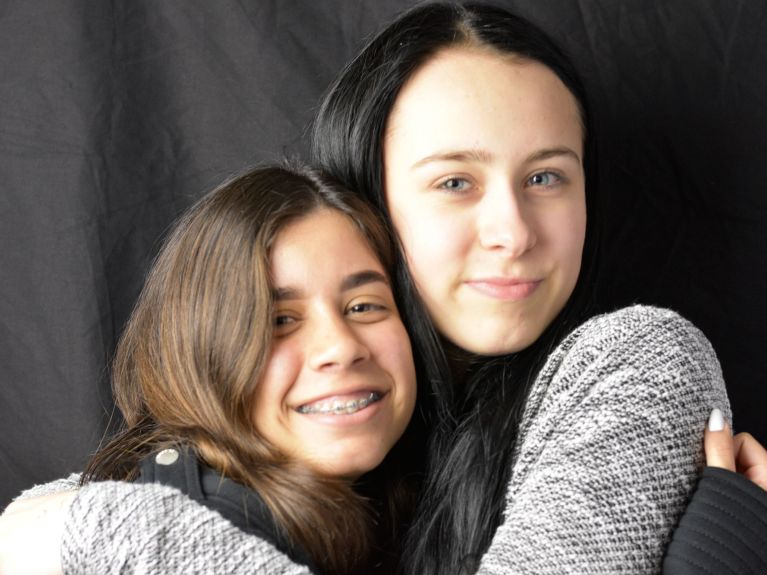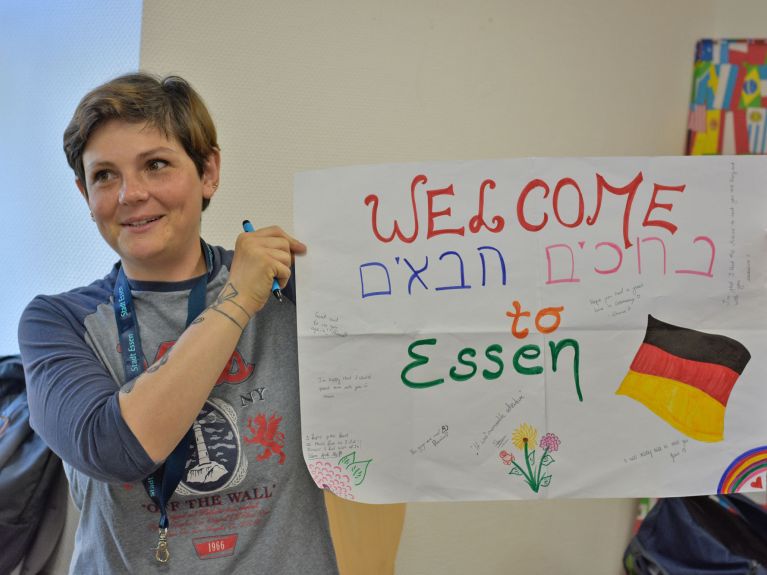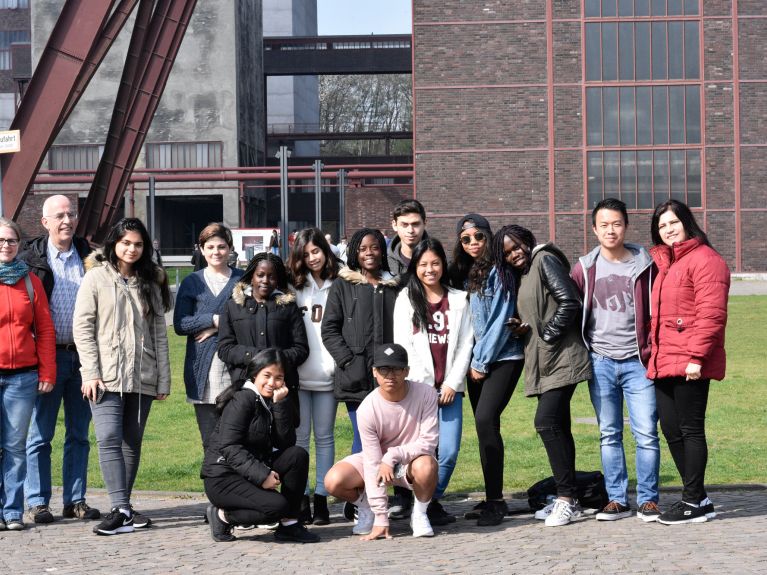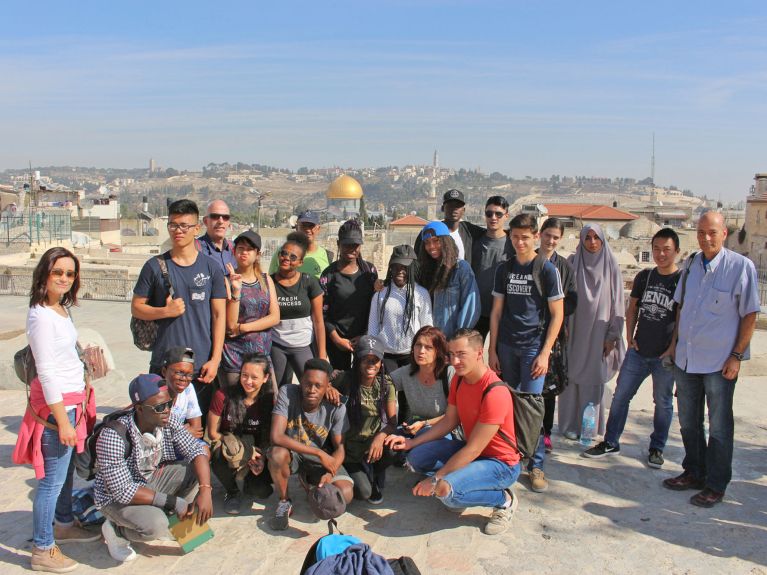Multicultural siblings
Two schools in Essen and Tel Aviv want to learn from each other: What must teaching be like in order for integration to be successful?

Germany. The teacher from Tel Aviv started crying in the classroom of the school in Essen: “We aren’t alone, after all.” The Israeli teacher works at Bialik-Rogozin School in Tel Aviv, an institution that has been showered with prizes, serves as a role model in Israel and has of late even been the subject of an Oscar-winning short film. Now this school has recently found out that it has something like a twin. In Germany, of all places – in Essen, to be precise: UNESCO-Schule. UNESCO-Schule Essen, a secondary school which earned its title around 25 years ago, is what is called an “Aufbaugymnasium”. Pupils from lower-ranking Hauptschule and Realschule secondary schools come to the UNESCO-Schule from class seven onwards in cases where teachers rate their individual performance and learning abilities to be good enough but the German language proves to be an obstacle: “We are able to teach up to nine German lessons per week here and offer additional help even in the upper classes,” says Head Teacher Annette Vogt.
Dieses YouTube-Video kann in einem neuen Tab abgespielt werden
YouTube öffnenThird party content
We use YouTube to embed content that may collect data about your activity. Please review the details and accept the service to see this content.
Open consent formThe result: Four out of five pupils leave the school having passed their Abitur examinations (equivalent to A Levels). Among the school’s students are those with a migrant background as well as refugee children from the Balkans, Africa and Asia – around 500 children from over 40 countries, speaking altogether over 30 languages. The school in Tel Aviv is similarly multicultural. “When the young people met on the student exchange programme, it was impossible to tell who was from Germany and who from Israel,” recalls Annette Vogt. The first contact between the two schools was made in summer 2016 – Essen and Tel Aviv are partner cities and the film about Bialik-Rogozin School had aroused the curiosity of the teachers at UNESCO-Schule. Three of them travelled to Israel and paved the way for the student exchange.
Klaus Kirstein, one of the German teachers, still talks enthusiastically about the first meeting a year and a half on: “When we got there, the students immediately approached us and danced with us.” Bialik-Rogozin School is famous for its arts-based education – because where language is a barrier, music, painting and dance may well be strengths. The fact that Head Teacher Eli Nechama formerly worked as an actor adds to this climate at the school. By the same token, the Israeli teachers and students admired the calmness and discipline at the German school: “Some of the things the school in Israel provides, especially through volunteers, exist here too – but not as part of the school system,” Annette Vogt explains. And in contrast to the school in Tel Aviv, the school in Essen also has a language-learning programme for the parents of refugee children, which takes place outside the school.
A place of learning with a special atmosphere
The school in Essen is thus perceived much more strongly as a traditional school, while the school in Tel Aviv, which is four times larger, appears more like a cultural or meeting centre – here, children are taught from class one onwards and the school is there for families and parents from 6 a.m. until 8 p.m. This changes the atmosphere of a place of learning – as well as the bond between teachers and pupils.
The best school for immigrants.
Johnson Blay, a student at Abitur level, talks enthusiastically about the good relationship between teachers and students that he observed in Tel Aviv: “The teachers there have a much closer relationship to their students and also talk to them about private things.” The German television journalist Norbert Kron, who wrote a book about the unusual German-Israeli school partnership, also noticed this: “Eli Nechama, the Israeli head teacher, is not really allowed to hug his students, but he does anyway.” His impression was that the most important thing the German school could learn from the Israeli one would be to think and act outside of the rules a little more. Kron sees Bialik-Rogozin School as “the best school for immigrants”.
And Norbert Kron – as well as Head Teacher Vogt – have noticed something else, too: While UNESCO-Schule champions human rights and an international perspective in its mission statement, Bialik-Rogozin School also attaches importance to building a positive relationship, even something akin to national pride towards Israel, among the students from refugee families: “On the remembrance day for soldiers, students wave Israeli flags and sing the national anthem – unthinkable at German schools,” recalls Kron.
The family should grow
At the same time, the refugee children in Tel Aviv are taught their mother tongue as a third language after Hebrew and English – because the school does not want them to forget or deny their roots. This led to something that quite surprised the teachers during the student exchange: The young people from Essen and Tel Aviv were able to converse in Arabic or Farsi at times, too. After having got to know one another at the first big meeting, the two schools now want to develop projects together, for example in sports, the arts or the local neighbourhood. Yet it is not so easy for UNESCO-Schule to perform the balancing act between project work and the German curriculum – while still catering to the special living and learning circumstances their students face, most of whom have to find their way in life and to successful learning without support from home.
Something else is remarkable, too: The exchange between the two extraordinary schools is less characterized by remembrance of the Holocaust than at many other schools. The students on both sides have few to no family ties to the topic. What does however play a role for everyone is the question of the relationship between Muslims and Jews in particular, as well as the ever current question of how a society treats minorities and foreign cultures. It could be said that this exchange shows that history has to be more than a culture of remembrance – the lessons of the past have to shape the present here.
The fact that in a multi-ethnic metropolitan region under pressure from new migrants and refugee children all schools should actually be thinking in this direction is another matter entirely. As good as it is that Bialik-Rogozin School and UNESCO-Schule have discovered that they are not alone in this world with their attitude, it would still be wonderful to see the twins, who may rather be siblings after all, become part of an even larger family as soon as possible.
